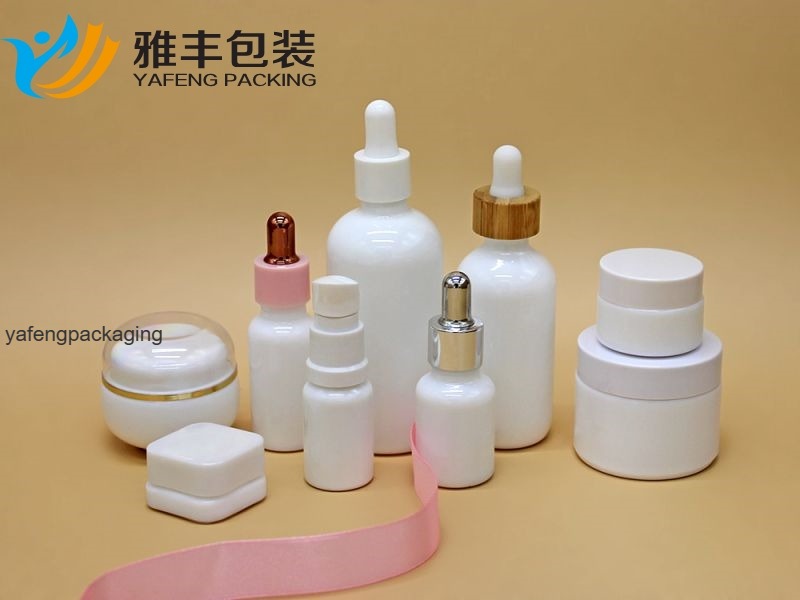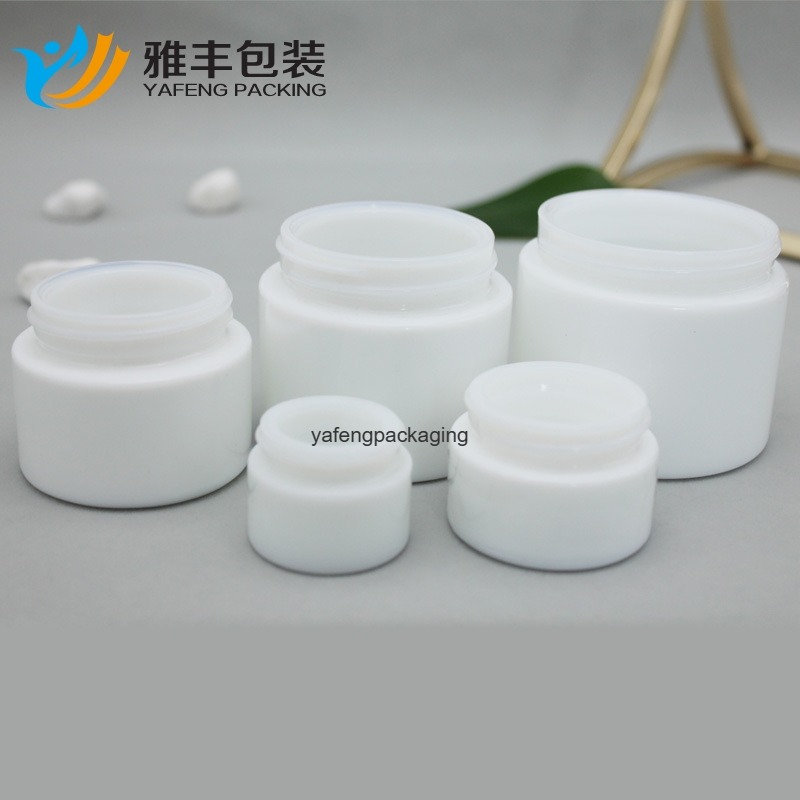

Definition of opal
Opal glass is a translucent milky glass. Add opacifying agents in the ingredients, such as fluorite, cryolite, sodium fluorosilicate, calcium phosphate, etc. It melts in the glass when it is melted, and when it is cooled, it precipitates into numerous smaller suspened grains and is in an opaque state, which scatters the light and does not completely pass through it, so it becomes soft.

Classification of opaque glass:
According to the degree of opacity, opacity glass can be divided into white porcelain glass and imitation jade glass in container glass. Therefore, opaque glass is also called white porcelain glass.
The basic composition of white porcelain glass is characterized by high AlzO3 content. Generally, according to the AlzO3 content in the composition, the opacity glass with AlzO3 content ≥ 10% is called large white porcelain glass, the one with A1203 content ≤ 5% is called small white porcelain glass, and the AlzO3 content of 5% to 10% is called medium glass. Porcelain glass. The opaque glass that is translucent and has a jade-like appearance is generally called imitation jade glass.
According to the different opacifying agents added, opacity glass can be divided into fluoride opacity glass, sulfate opacity glass, phosphate opacity glass, sulfide opacity glass, chloride opacity glass and arsenide opacity glass Wait. In addition, the opacity glass in which the coloring agent is added to the opacity glass is called color opacity glass; the glass is opacified by phase separation of the glass, and this kind of glass is called phase-separation opacity glass.
The mechanism of opacity glass formation:
The opacification effect of glass is due to the existence of countless tiny crystals in the glass. These particles have different densities from the glass body. When light passes through the interface between two media with different densities, it will change the direction of travel and cause light refraction. The light is refracted many times in the glass, which will produce light scattering, making the glass opacified.
The tiny crystals in the glass are mainly formed by the opacifying agent added to the glass. Some opacifying agents cannot be dissolved in the vitreous body at all, but exist in dispersed particles; some opacifying agents have limited solubility, and as the temperature decreases, the solubility also decreases, making it reach a supersaturated state, and there is a tendency to devitrify from the vitreous body Tendency, but due to the high viscosity of the glass body, these substances have no time to precipitate when the glass is cooled, and the glass can be formed into opacity after heating. Therefore, in actual production, sometimes some opacified glasses can be seen to form opacities in the forming stage, while some need to be heated to form opacities.
The degree of opacification of glass is related to the size and number of opacifying agent particles. When the particle size of the opacity substance is close to 100nm, the glass can only have a weak opacification phenomenon. The opacity glass with 5-100nm particles is coarse-grained. When the particles are 100-200nm and have a certain number, the glass will show a certain A degree of opacification. As the number of such particles increases, the light scattering effect continues to increase and the degree of opacity of the glass becomes stronger. In strong opacified glass, there are about 100,000 opacified particles within 1mm3.
Opal glass advantage:
Natural and elegant, its jade-like material itself has a noble . Good shading can prolong the shelf life of the products inside. It is a high-quality material that improves the quality of the product. On the premise of ensuring the luster of the glass, it also has the general texture of ceramics, which is very luxurious in oriental culture.






